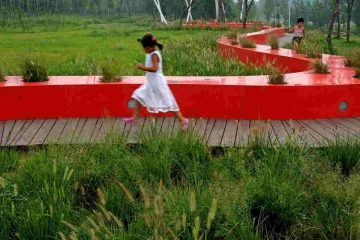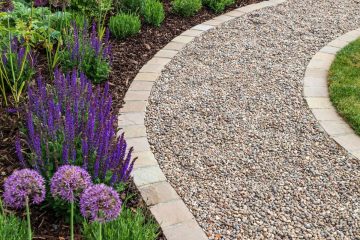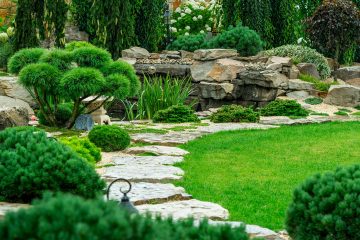One material that is used extensively by landscapers for landscaping projects is gravel. Gravel has many attributes that make it a more desirable material than many others with one of the most important attributes being a relatively low cost. This is especially relevant when the landscape design has to be created and constructed within a relatively small budget.
Apart from being affordable, gravel also has practical advantages such as being a material that offers excellent drainage properties. There is also the aesthetic value of gravel since it can come in multiple colours, shapes, and sizes. If you are considering a new landscape design for your garden but were not aware of the benefits of using gravel, here are seven ways in which it can be included in your landscaping.
Driveways: The key to using gravel as an effective driveway surface material is that it must be installed professionally by experts to ensure that any vehicle using it can be properly supported. If this can be done, gravel can offer a solid surface for vehicles. In addition, it is especially suitable for drainage after heavy rainfall.
Pathways: There are many paving materials for which gravel is perfect for filling the gaps and spaces between paving stones. It can be used to create an aesthetically pleasing contrast in colour with the paving stones or to add an element of randomness between paving stones that are the same colour and shape. Alternatively, gravel of the same colour as the paving material provides a uniform appearance.
Walkways: If you love the noise beneath your feet as you walk on gravel, then you might wish to consider it for the walkways within your landscape design. As with driveways, professional installation is essential. Appearances include having lots of contrasting gravel stones or them all the same colour. On a practical note, to prevent ‘rolling’ which is where gravel moves under one’s feet when walking on it, it is best to use large gravel pieces which remain in place more readily.
General Flooring: General flooring is catch-all for any area of your garden where you wish to have a different base from your walkways or your lawn. This can include a seating area with a bench, or around a fixed feature, such as a large garden ornament. Again, you have lots of flexibility to use the variable colours and shapes of gravel, plus its permeability helps prevent flooding in those areas if there is a downpour.
Water Features: Gravel can be used with several different types of water features to great effect, and it can also be mixed with other materials such as larger stones and rocks within water features. Examples include having gravel in the bottom of ponds, lining dry-creek beds, and covering the base of fountains.
Drainage: We have mentioned how the permeability of gravel has advantages when you wish any water to drain away, and that is why many landscaped gardens employ gravel to drain, direct or move water within them. It is also used to aid drainage on impermeable areas of hardscape.
Soil Erosion Prevention And Control: Gravel can be used on slopes, walkways, and inclined plant beds to prevent soil erosion. For this use, you ideally want crushed gravel as its edges are angular which helps the gravel catch soil particles when water is running through it.


